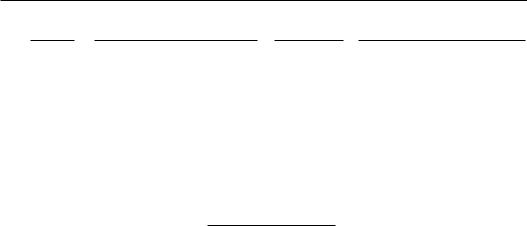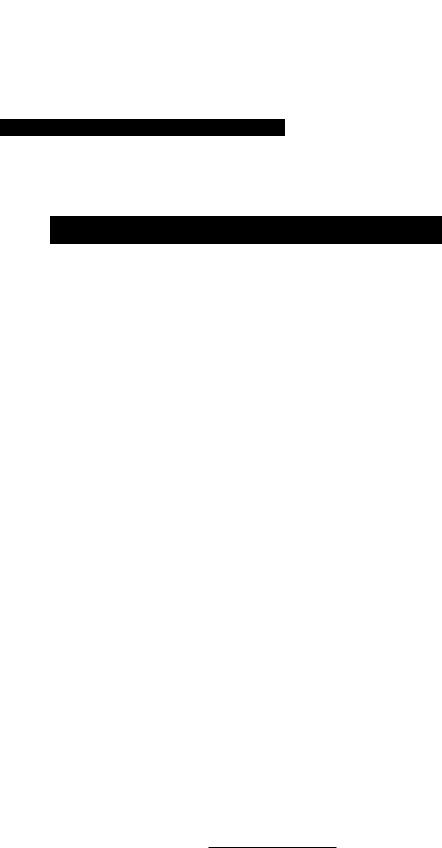
CFA Level 1 (2009) - 5
.pdf
Study Session 16
Cross-Reference to CFA Institute Assigned Reading #66 - Introduction to the Measurement of Interest Rate Risk
Figure 4: Duration-Based Price Estimates vs. Actual Bond Prices
I
Prile
$1,000.00 |
|
_.. - - ,\} -- |
Prices based on durat}on |
|||
$993.53 |
- |
"', |
|
|
arc underestimates ofacrual prices. |
|
$908.00 |
|
, |
|
, |
|
|
$828.41 |
|
|
|
|
||
|
, |
• |
, |
_ |
|
|
|
_____________ ...J, |
''. |
|
|||
$822.47 |
|
|
___ W_, |
_ |
Al (LuI priu:-yield Clirve |
|
|
|
|
|
|
||
|
|
|
|
|
|
|
|
|
|
|
|
Price estimates based |
|
|
|
|
|
|
on a Juration of 9.42 |
|
|
|
|
|
|
|
---1'Tlv1 |
|
~-_. -~--~---'---- |
|||||
|
|
8% |
|
10% |
|
|
Based on a valuc of 9.42 for duration, wc would estimatc the new prices after IIYo |
||||||
changes in yielu ([0 81!..iJ |
and to 10lrb) as 1.0942 x 908 " $99:1.5:1 and (1 - 0.(942) x 90H |
|||||
" $822.47, respectively. These price estimates arc shown in Figure 4 along the straight line tangent to the actual price-yield curve.
The actual price of the 8% bonu at a YTM of8 1Vo is, of course, par value ($1,000). Based on a YTM of 1O~,-(), the actual price of the bond is $828.41, about $6 higher than our duration based estimate of $822.47. Note that price estimates based on duration arc less than the actual prices for both a I % increase and a 1% decrease in yield.
Figure 4 illustrates why convexity is important and why estimates of price changes based solely on duration are inaccurate. If the price-yield relation were a straight line (i.e.,
if convexity were zero), duration alone would provide good estimates of bond price changes for changes in yield of any magnitude. The greater the convexity, the greater the error in price estimates based solely on duration.
A Bond's Approximate Percentage Price Change Based on Duration and
Convexity
By combining duration and convexity, we can obtain a more accurate estimate of the percentage change in price of a bond, especially for relatively large changes in yield. The formula for estimating a bond's percentage price change based on its convexity and duration is:
percentage change in price = duration effect + convexity effect
= {[-duration X(6.y)] +[convexity X(6.y)2]}x 100
With 6.y entered as a decimal, the "x 100" is necessary to get an answer in percent.
Page 142 |
©2008 Kaplan Schweser |

Study Session 16
Cross-Reference to CFA Institutc Assigncd Reading #66 - Introduction to the Measuremcnt of Interest Rate Risk
Example: Estimating price changes with duration and con.vexity
Consider an 8% Treasury bond with a current price of$908 and a YTM of9%.
Calculate the percentage change in price of both a 1% increase and a 1% decrease in
YTM based on a duration of9.42 and a convexity 01'68.33.
Answer:
The duration effect, as we calculated earlier, is 9.42 x 0.01 = 0.0942 = 9.42%. The convexity effect is 68.33 x 0.01 2 x 100 = 0.00683 x 100 = 0.683%. The total effect for a decrease ill Jield of1% (from 9% to 8%) is 9.42% + 0.683% = +10.1 03% and the estimate of the new price of the bond is 1.10103 x 908 = 999.74. This is much closer to the actual price of $1 ,000 than our estimate using only duration.
The total effect for an increase illyield of1 % (from 9% to 10%) is -9.42% + 0.683% = -8.737% and the estimate of the bond price is (1- 0.08737)(908) = $828.67. Again, this is much closer to the actual price ($828.40) than the estimate based solely on duration.
There are a few points worth noting here. First, the convexity adjustment is always positive when convexity is positive because (6y)2 is always positive. This goes along with the illustration in Figure 4, which shows that the duration-only based estimate of a bond's price change suffered from being an underestimate orthe percentage increase in the bond price when yields fell, and an overestimate of the percentage decrease in the bond price when yields rose. Recall, that for a callable bond, convexity can be negative
at low yields. When convexity is negative, the convexity adjustment to the duration-only based estimate of the percentage price change will be negative for both yield increases and yield decreases.
Professors Note: Different dealers may calculate the convexity measure different(y. ~;-':;"i\ Often the measure is calculated in a way that requires u.. to divide the measure (~~~ by two in order to get the correct convexity adjustment. for exam purposes, the
"C_,-,-", formula we've shown here is the one you need to know. However, you should also know that there can be some variation in how different dealers calculate convexity.
Effective convexity takes into account changes in cash Haws due to embedded options, while modified convexity does not. The difference between modified convexity and effective convexity mirrors the difference between modified duration and effective duration. Recall that modified duration is calculated without any adjustment to a bond's cash Hows for embedded options. Also recall that effective duration was appropriate for bonds with embedded options because the inputs (prices) were calculated under the assumption that the cash Hows could vary at different yields because of the embedded options in the securities. Clearly, effective convexity is the appropriate measure to lISe
©2008 Kaplan Schweser |
Page 14j |

Study Session 16
Cross-Reference to CFA Institute Assigned Reading #66 - Introduction to the Measurement ofInterest.Rate Risk
for bonds with embedded options, since it is based on bond values that incorporate the effect of embedded options on the bond's cash {lows.
~ ("} S () {) .i: ( |
:(i I ;"'\': ; ; ;' \ ~ l' |
! ~_-1' ' . ,:;;;I' |
~'cJ~)~i,111_:--'~
Study Session 1G
Cross-Reference to CFA Institute Assigned Reading #66 - Introduction to the Measurement of Interest Rate Risk
" . |
|
., I~EY CONCEPTS |
, : |
LOS 66.a
The full valuation approach to measuring inrerest rate risk involves using a pricing model to value individual bonds and can be used to flnd the price impact of any scenario of illterest rate/yield curve changes. Irs advantages are its flexibility and precision.
The duration/convexity approach is based on summary measures of inrerest rate risk and, while simpler to use for a portfolio of bonds than the full valuation approach, is theoretically correct only for parallel shifts in the yield curve.
LOS ()6.t>
Callable bonds and prepayable securities will have less price volatility (lower duration) at low yields, compared to option-free bonds.
rutable bonds will have less price volatility at high yields, compared to option-free bonds.
LOS 66.c
Option-free bonds have a price-yield relationship that is curved (convex toward the origin) and are said to exhibit positive convexity. In this case, bond prices fall less in response to an increase in yield than they rise in response to an equal-sized decrease in yield.
Callable bonds exhibit negative convexity at low yield levels. In this case, bond prices rise less in response ro a decrease in yield than they fall in response to an equal-sized increase in yield.
LOS 66.d
Effective duration is calculated as the ratio of the average percentage price change for an equal-sized increase and decrease in yield, to the change in yield.
CC • |
d' V - V+ |
|
Enectlve |
uratlon = - ( |
) |
|
2Vo |
.6.y |
Approximate percenrage change in bond price = -duration x change in yield in percent.
l,OS 66.c
The most intuitive interpretation of duration is as the percentage change in a bond's price for a 1% change in yield to maturity.
Macaulay duration and modified duration are based on a bond's promised cash flows.
Effective duration is appropriate for estimating price changes in bonds with embedded options because it takes in to account the effect of embedded options on a bond's cash flows.
©2008 Kaplan Schwcser |
Page 145 |

5rudy Session 16
Cross-Reference to CFA Institute Assigned Reading #6(J - Introduction to the Measurement of Interest Rate Risk
LOS 66.f
The duration of a bond portfolio is equal to a weighted average of tHe individual bond durations, where the weights are the proportions of total portfolio value in each hond
l)()SIUOll.
Ponfolio duration is limitcd became it gives the sensilivity of ponColio valuc only to yield changes thaI arc equal for all bonds in the portfolio, an unlikely scenario for most portColios.
LOS 66.g
Because of convexity, the duration measure is a poor approximation of price sensitivity for yield changes that arc not absolutely small. The convexity adjustment accounts for the curvature of the price-yield relationship.
Incorporating both dural ion and convexity, we can estimate the pcrcemage change in price in response to a change in yidd of (6y) as:
{[(-duration)(t-.y)] + [(convexitY)(fiy )2]} x 100
LOS 66.h
Effective convexity considers expected changes in cash flows that may occur for bonds with embedded options, while modified convexity docs no!.
LOS 66.i
Price value of a basis point (PVBP) is an estimate of lhe change in a bond's or a bond portfolio's value for a one basis point change in yield.
PVBP = duration x 0.0001 x bond (or portfolio) value.
Page 146 |
©2008 Kaplan 5chwcscr |





